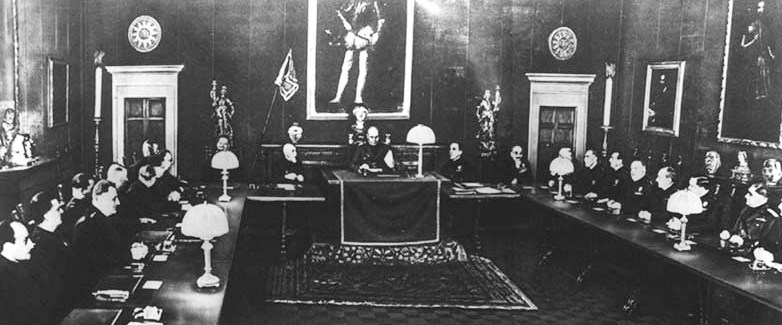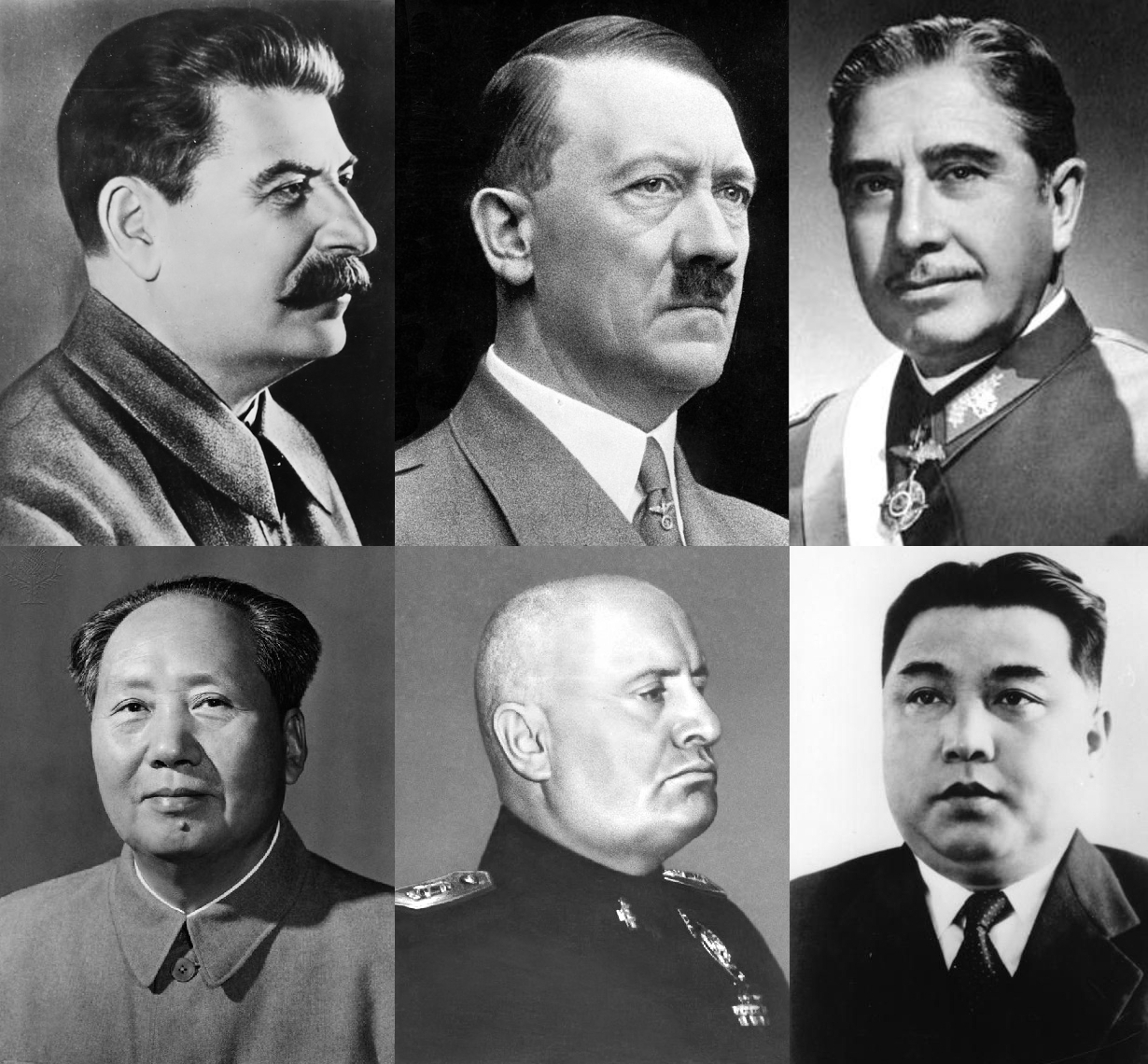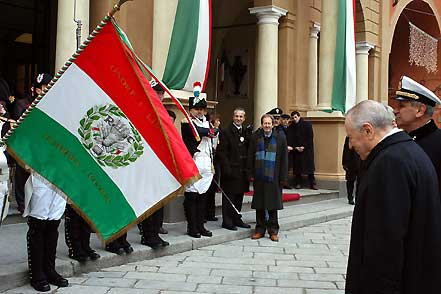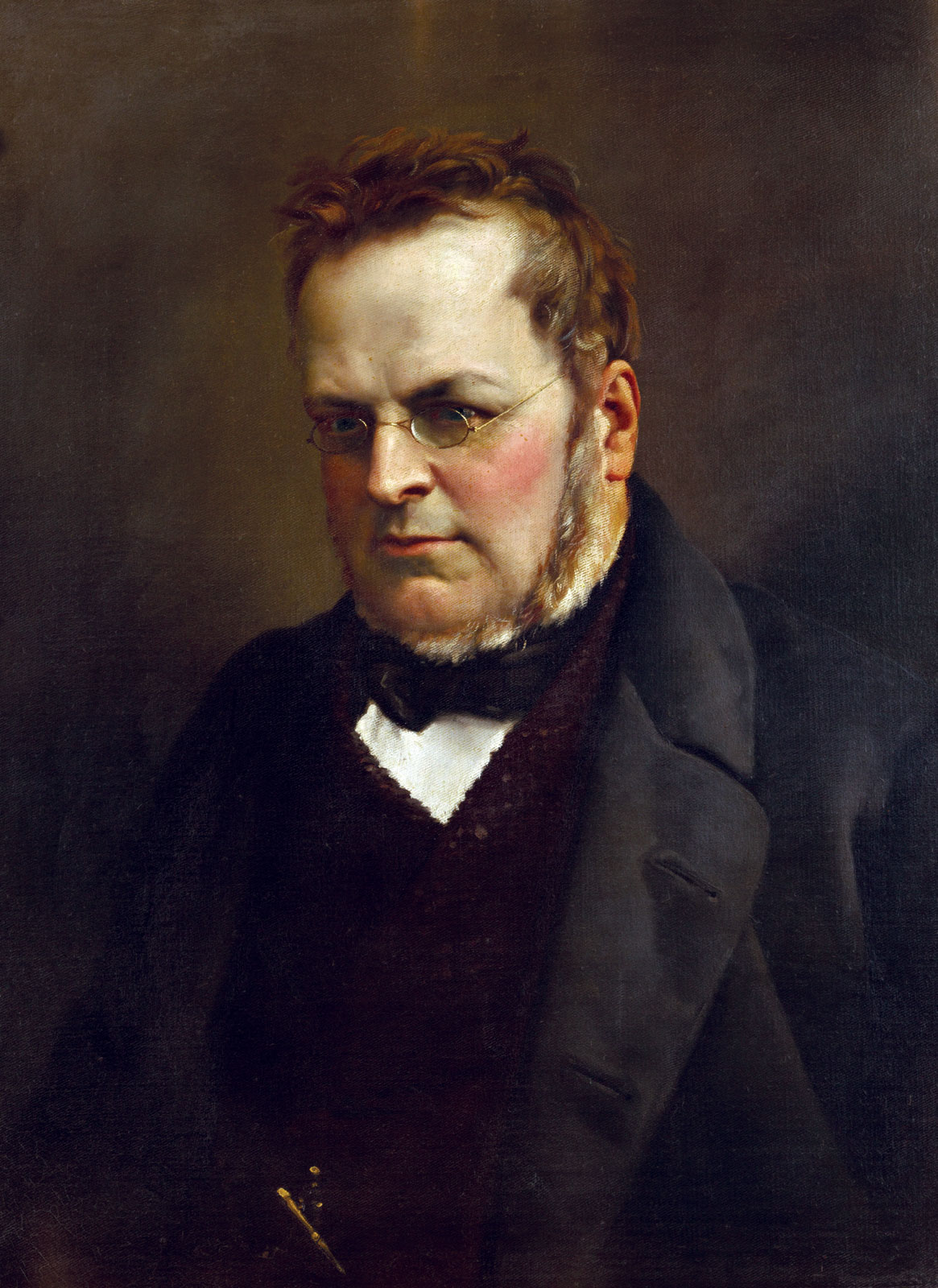|
Duce
( , ) is an Italian title, derived from the Latin word 'leader', and a cognate of ''duke''. National Fascist Party leader Benito Mussolini was identified by Fascists as ('The Leader') of the movement since the birth of the in 1919. In 1925 it became a reference to the dictatorial position of ('His Excellency Benito Mussolini, Head of Government, Leader of Fascism and Founder of the Empire'). Mussolini held this title together with that of President of the Council of Ministers: this was the constitutional position which entitled him to rule Italy on behalf of the King of Italy. ''Founder of the Empire'' was added for the exclusive use by Mussolini in recognition of his founding of an official legal entity of the Italian Empire on behalf of the King in 1936 following Italy's victory in the Second Italo-Ethiopian War. The position was held by Mussolini until 1943, when he was removed from office by the King and the position of "Duce" was dismantled, while Marshal Pietro Bad ... [...More Info...] [...Related Items...] OR: [Wikipedia] [Google] [Baidu] |
Fall Of The Fascist Regime In Italy
The fall of the Fascist regime in Italy, also known in Italy as 25 Luglio ( it, Venticinque Luglio, ; "25 July"), came as a result of parallel plots led respectively by Count Dino Grandi and King Victor Emmanuel III of Italy, Victor Emmanuel III during the spring and summer of 1943, culminating with a successful vote of no confidence against the Prime Minister Benito Mussolini at the meeting of the Grand Council of Fascism on 24–25 July 1943. As a result, a Badoglio I Cabinet, new government was established, putting an end to the 21 years of Fascist Italy (1922–1943), Fascist rule in the Kingdom of Italy, and Mussolini #Arrest of Mussolini, was placed under arrest.Bianchi (1963), p. 609Bianchi (1963), p. 704De Felice in Grandi (1983), p. 21De Felice (1996), p. 1391 Background At the beginning of 1943, Italy was facing defeat. The Second Battle of El Alamein, collapse of the African front on 4 November 1942 and the Operation Torch, Allied landings in North Africa on 8– ... [...More Info...] [...Related Items...] OR: [Wikipedia] [Google] [Baidu] |
Benito Mussolini
Benito Amilcare Andrea Mussolini (; 29 July 188328 April 1945) was an Italian politician and journalist who founded and led the National Fascist Party. He was Prime Minister of Italy from the March on Rome in 1922 until his deposition in 1943, and " Duce" of Italian Fascism from the establishment of the Italian Fasces of Combat in 1919 until his execution in 1945 by Italian partisans. As dictator of Italy and principal founder of fascism, Mussolini inspired and supported the international spread of fascist movements during the inter-war period. Mussolini was originally a socialist politician and a journalist at the ''Avanti!'' newspaper. In 1912, he became a member of the National Directorate of the Italian Socialist Party (PSI), but he was expelled from the PSI for advocating military intervention in World War I, in opposition to the party's stance on neutrality. In 1914, Mussolini founded a new journal, ''Il Popolo d'Italia'', and served in the Royal Italian Arm ... [...More Info...] [...Related Items...] OR: [Wikipedia] [Google] [Baidu] |
National Fascist Party
The National Fascist Party ( it, Partito Nazionale Fascista, PNF) was a political party in Italy, created by Benito Mussolini as the political expression of Italian Fascism and as a reorganization of the previous Italian Fasces of Combat. The party ruled the Kingdom of Italy from 1922 when Fascists took power with the March on Rome until the fall of the Fascist regime in 1943, when Mussolini was deposed by the Grand Council of Fascism. It was succeeded, in the territories under the control of the Italian Social Republic, by the Republican Fascist Party, ultimately dissolved at the end of World War II. The National Fascist Party was rooted in Italian nationalismStanley G. Payne. A History of Fascism, 1914–1945. p. 106.Roger Griffin, "Nationalism" in Cyprian Blamires, ed., ''World Fascism: A Historical Encyclopedia'', vol. 2 (Santa Barbara, California: ABC-CLIO, 2006), pp. 451–53. and the desire to restore and expand Italian territories, which Italian Fascists deemed n ... [...More Info...] [...Related Items...] OR: [Wikipedia] [Google] [Baidu] |
Death Of Benito Mussolini
The death of Benito Mussolini, the deposed Italian fascist dictator, occurred on 28 April 1945, in the final days of World War II in Europe, when he was summarily executed by an Italian partisan in the small village of Giulino di Mezzegra in northern Italy. The generally accepted version of events is that Mussolini was shot by Walter Audisio, a communist partisan. However, since the end of the war, the circumstances of Mussolini's death, and the identity of his executioner, have been subjects of continuing dispute and controversy in Italy. In 1940, Mussolini took his country into World War II on the side of Nazi Germany but soon was met with military failure. By the autumn of 1943, he was reduced to being the leader of a German puppet state in northern Italy and was faced with the Allied advance from the south and an increasingly violent internal conflict with the partisans. In April 1945, with the Allies breaking through the last German defences in northern Italy and a g ... [...More Info...] [...Related Items...] OR: [Wikipedia] [Google] [Baidu] |
Italian Social Republic
The Italian Social Republic ( it, Repubblica Sociale Italiana, ; RSI), known as the National Republican State of Italy ( it, Stato Nazionale Repubblicano d'Italia, SNRI) prior to December 1943 but more popularly known as the Republic of Salò ( it, Repubblica di Salò ), was a German puppet state with limited diplomatic recognition which was created during the later part of World War II, that existed from the beginning of the German occupation of Italy in September 1943 until the surrender of German troops in Italy in May 1945. The German occupation regime provoked widespread national resistance, leading to the Italian Civil War. The Italian Social Republic was the second and final incarnation of the Italian Fascist state, oficially led by Benito Mussolini and his reformed anti-monarchist Republican Fascist Party. The newly-founded state declared Rome its capital but was ''de facto'' centred on Salò (hence its colloquial name), a small town on Lake Garda, near Bresc ... [...More Info...] [...Related Items...] OR: [Wikipedia] [Google] [Baidu] |
Pietro Badoglio
Pietro Badoglio, 1st Duke of Addis Abeba, 1st Marquess of Sabotino (, ; 28 September 1871 – 1 November 1956), was an Italian general during both World Wars and the first viceroy of Italian East Africa. With the fall of the Fascist regime in Italy, he became Prime Minister of Italy. Early life and career Badoglio was born in 1871. His father, Mario Badoglio, was a modest landowner, and his mother, Antonietta Pittarelli, was of middle-class background. On 5 October 1888 he was admitted to the Royal Military Academy in Turin. He received the rank of Second Lieutenant in 1890. In 1892, he finished his studies and was promoted to Lieutenant. After completing his studies, he served with the ''Regio Esercito'' (Italian Royal Army) from 1892, at first as a Lieutenant (''Lieutenant, Tenente'') in artillery, taking part in the early Italian colonial wars in Eritrea (1896), and in Libya (1912). First World War At the beginning of Italian participation in the First World War, h ... [...More Info...] [...Related Items...] OR: [Wikipedia] [Google] [Baidu] |
Grand Council Of Fascism
The Grand Council of Fascism (, also translated "Fascist Grand Council") was the main body of Mussolini's Fascist government in Italy, that held and applied great power to control the institutions of government. It was created as a body of the National Fascist Party in 1922, and became a state body on 9 December 1928. The council usually met at the Palazzo Venezia, Rome, which was also the seat of the head of the Italian government. The Council became extinct following a series of events in 1943, in which Benito Mussolini was voted out of the Prime Ministry of Italy. Powers of the Council Essentially, the council held these powers: *The power to elect the Fascist Party deputies, the nomination for the Party Secretary and other party leaders, the approval of the party statutes and the power regarding the party's policy. *The power to elect the Crown's line of succession including the choice of the heir to the throne, the right of the crown, the power to choose possible su ... [...More Info...] [...Related Items...] OR: [Wikipedia] [Google] [Baidu] |
Führer
( ; , spelled or ''Fuhrer'' when the umlaut is not available) is a German word meaning "leader" or " guide". As a political title, it is strongly associated with the Nazi dictator Adolf Hitler. Nazi Germany cultivated the ("leader principle"), and Hitler was generally known as just ("the Leader"). In compound words, the use of "" remains common in German and is used in words such as ( mountain guide) or ( leader of the opposition). However, because of its strong association with Hitler, the isolated word itself usually has negative connotations when used with the meaning of "leader", especially in political contexts. The word has cognates in the Scandinavian languages, spelled '' fører'' in Danish and Norwegian, which have the same meaning and use as the German word, but without necessarily having political connotations. In Swedish, '' förare'' normally means "driver" (of a vehicle). However, in the compound word '' härförare'', that part does mean "leader", ... [...More Info...] [...Related Items...] OR: [Wikipedia] [Google] [Baidu] |
Dictator
A dictator is a political leader who possesses absolute power. A dictatorship is a state ruled by one dictator or by a small clique. The word originated as the title of a Roman dictator elected by the Roman Senate to rule the republic in times of emergency (see Roman dictator and ''justitium''). Like the term ''tyrant'', and to a lesser degree '' autocrat'', ''dictator'' came to be used almost exclusively as a non-titular term for oppressive rule. In modern usage the term ''dictator'' is generally used to describe a leader who holds or abuses an extraordinary amount of personal power. Dictatorships are often characterised by some of the following: suspension of elections and civil liberties; proclamation of a state of emergency; rule by decree; repression of political opponents; not abiding by the procedures of the rule of law, and the existence of a cult of personality centered on the leader. Dictatorships are often one-party or dominant-party states. A wide variety o ... [...More Info...] [...Related Items...] OR: [Wikipedia] [Google] [Baidu] |
List Of Italian Flags ...
This is a list of flags used in Italy. For more information about the national flag, visit the article Flag of Italy. National flags Military flags Army rank flags Naval rank flags Standards Historical flags Preunification era Napoleonic era Unification and Kingdom of Italy Italian Republic Regional flags Official regional flags Ordinary regions Autonomous regions Other Flags of traditional and historical regions Proposed regional flags Provincial flags Municipal flags Citations References * {{Italy topics Italy Flags A flag is a piece of fabric (most often rectangular or quadrilateral) with a distinctive design and colours. It is used as a symbol, a signalling device, or for decoration. The term ''flag'' is also used to refer to the graphic design employ ... [...More Info...] [...Related Items...] OR: [Wikipedia] [Google] [Baidu] |
Prime Minister Of Italy
The Prime Minister of Italy, officially the President of the Council of Ministers ( it, link=no, Presidente del Consiglio dei Ministri), is the head of government of the Italian Republic. The office of president of the Council of Ministers is established by articles 92–96 of the Constitution of Italy; the president of the Council of Ministers is appointed by the president of the Republic and must have the confidence of the Parliament to stay in office. Prior to the establishment of the Italian Republic, the position was called President of the Council of Ministers of the Kingdom of Italy (''Presidente del Consiglio dei ministri del Regno d'Italia''). From 1925 to 1943 during the Fascist regime, the position was transformed into the dictatorial position of Head of the Government, Prime Minister Secretary of State (''Capo del Governo, Primo Ministro Segretario di Stato'') held by Benito Mussolini, Duce of Fascism, who officially governed on the behalf of the king of ... [...More Info...] [...Related Items...] OR: [Wikipedia] [Google] [Baidu] |
President Of The Council Of Ministers (Italy)
The Prime Minister of Italy, officially the President of the Council of Ministers ( it, link=no, Presidente del Consiglio dei Ministri), is the head of government of the Italian Republic. The office of president of the Council of Ministers is established by articles 92–96 of the Constitution of Italy; the president of the Council of Ministers is appointed by the president of the Republic and must have the confidence of the Parliament to stay in office. Prior to the establishment of the Italian Republic, the position was called President of the Council of Ministers of the Kingdom of Italy (''Presidente del Consiglio dei ministri del Regno d'Italia''). From 1925 to 1943 during the Fascist regime, the position was transformed into the dictatorial position of Head of the Government, Prime Minister Secretary of State (''Capo del Governo, Primo Ministro Segretario di Stato'') held by Benito Mussolini, Duce of Fascism, who officially governed on the behalf of the king of Italy. ... [...More Info...] [...Related Items...] OR: [Wikipedia] [Google] [Baidu] |
.jpg)






